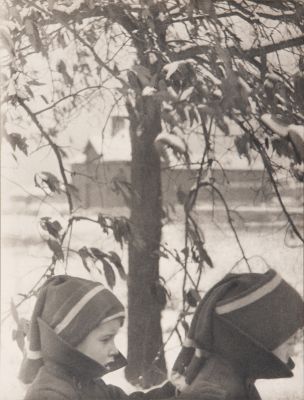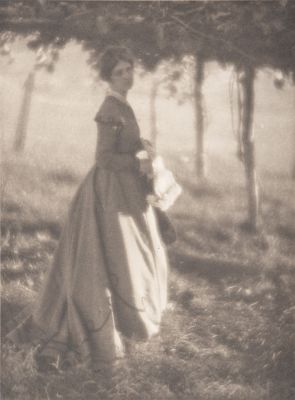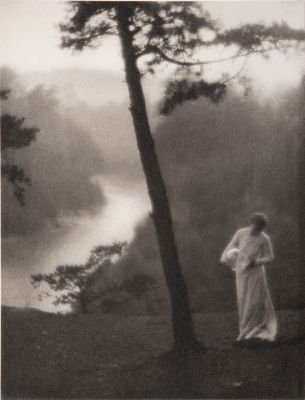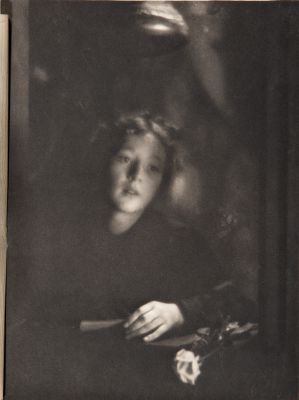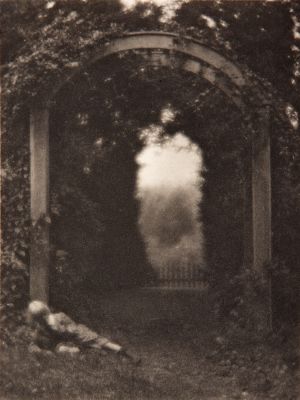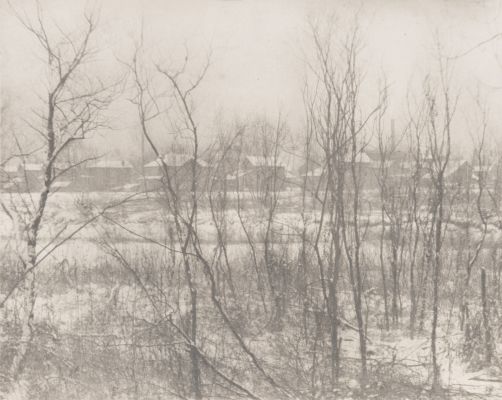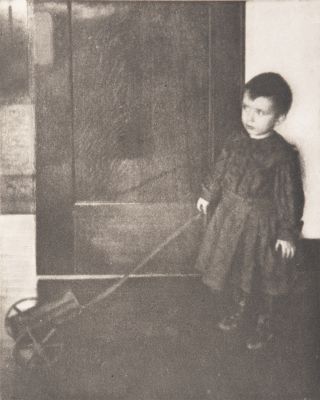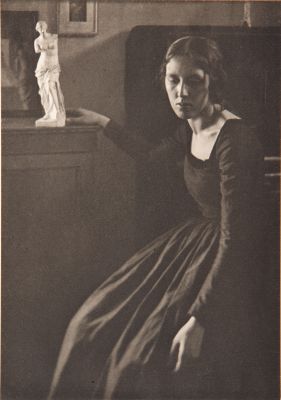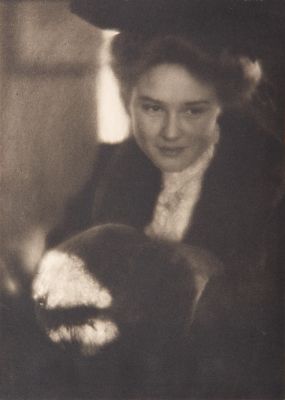
Title
Drops of RainArtist
White, Clarence H. (American, 1871-1925)Publication
Camera Work XXIIIDate
1908Process
PhotogravureAtelier
Manhattan Photogravure Company, NYImage Size
19.4 x 15.4 cm
Clarence H. White was a gentle mid-westerner with a pictorial sensitivity even among the Photo-Secessionists. Although he moved from Newark, Ohio, to New York City in 1906, his imagery remained quiet and centered on his family. In the issue of Camera Work in which the soft-focus and formalistic Drops of Rain appeared, Charles H. Caffin observed: It is [the] rare combination of a natural instinct for beauty, refined and trained by an impulse from within, and of an imagination, pure and serious, that gives to all White’s work not only a pronounced individuality, but also a peculiarly rarified charm. They are the emanations of a beautiful spirit. Along with Gertrude Kasebier, White helped organize the Pictorial Photographers of America after the Photo-Secession began to break up. In 1914 he established the Clarence H. White School of Photography giving classes in Maine and New York, and soon became widely acclaimed is a teacher. [1]
Reproduced / Exhibited
Frizot, Michael. New History of Photography. Place of publication not identified: Pajerski, 1999. Print P.292
Peterson, Christian A. Camera Work: Process & Image : [exhibition, Minneapolis, Minneapolis Institute of Arts, August 31-November 3, 1985, Seattle, Seattle Art Museum, November 22, 1985-February 2, 1986]. Minneapolis: Minneapolis Institute of arts, 1985. p. 75.
References
[1] Peterson, Christian A. Camera Work: Process & Image : [exhibition, Minneapolis, Minneapolis Institute of Arts, August 31-November 3, 1985, Seattle, Seattle Art Museum, November 22, 1985-February 2, 1986]. Minneapolis: Minneapolis Institute of arts, 1985. p. 75.
